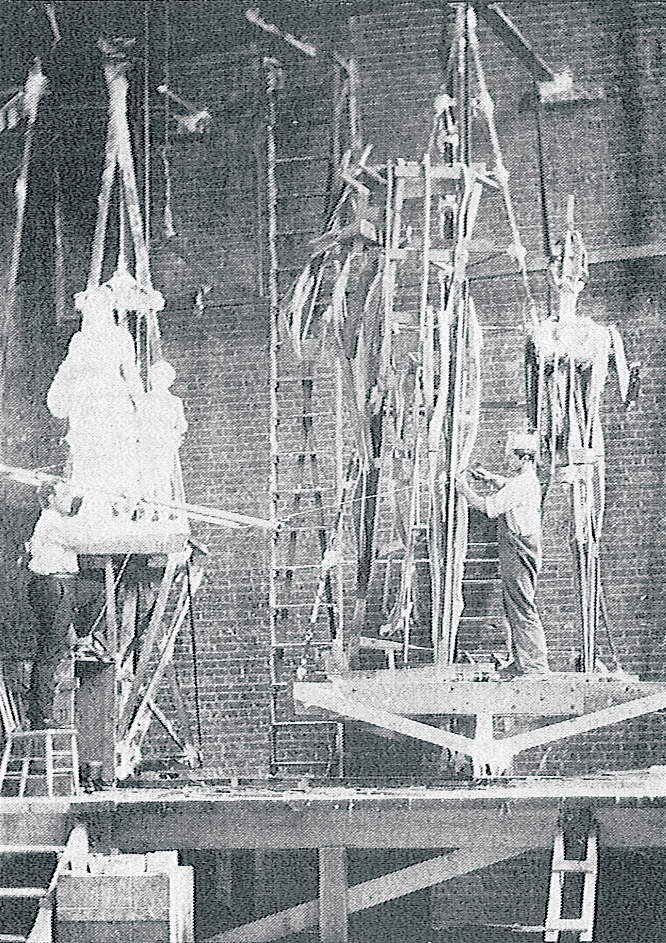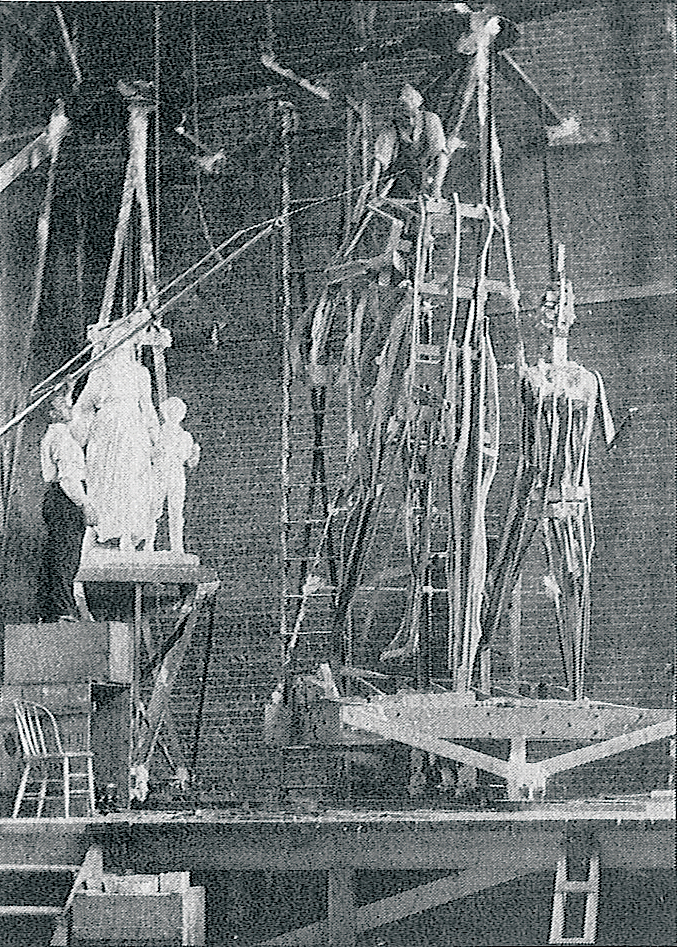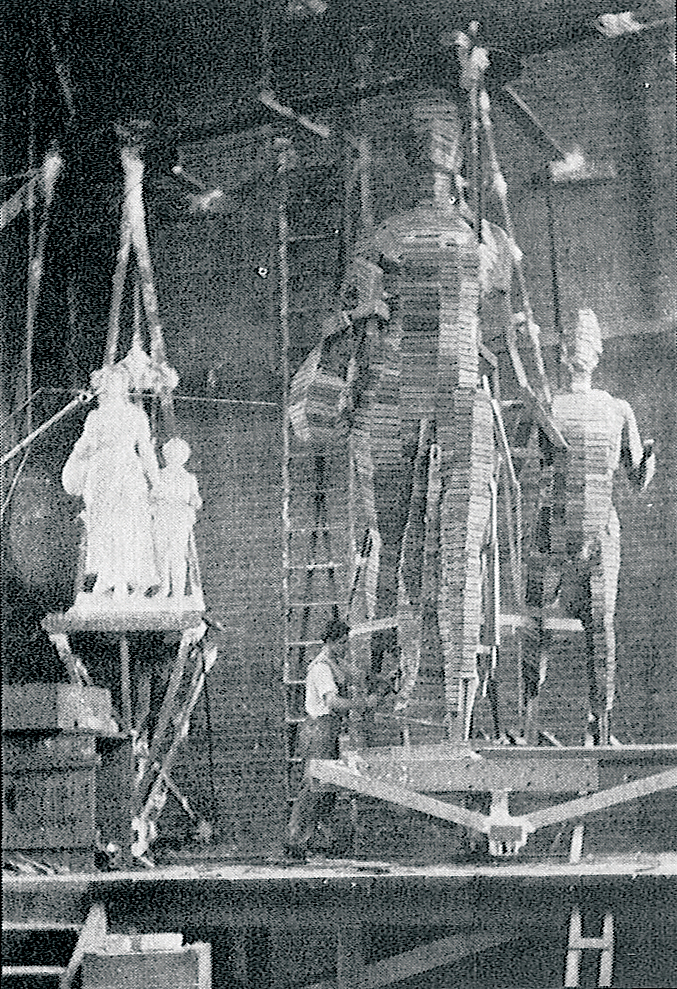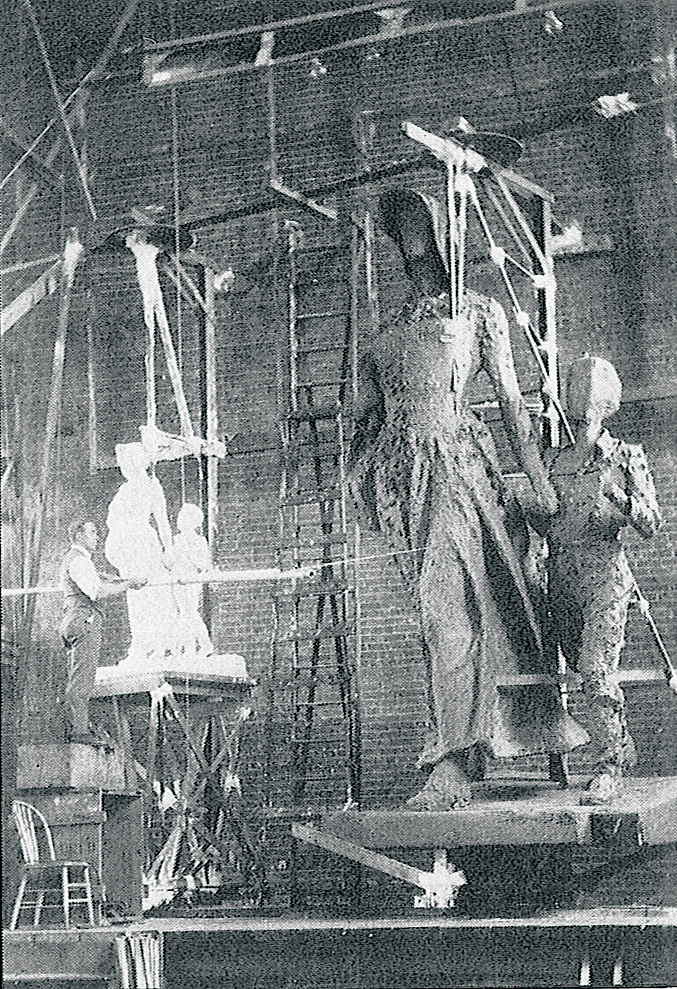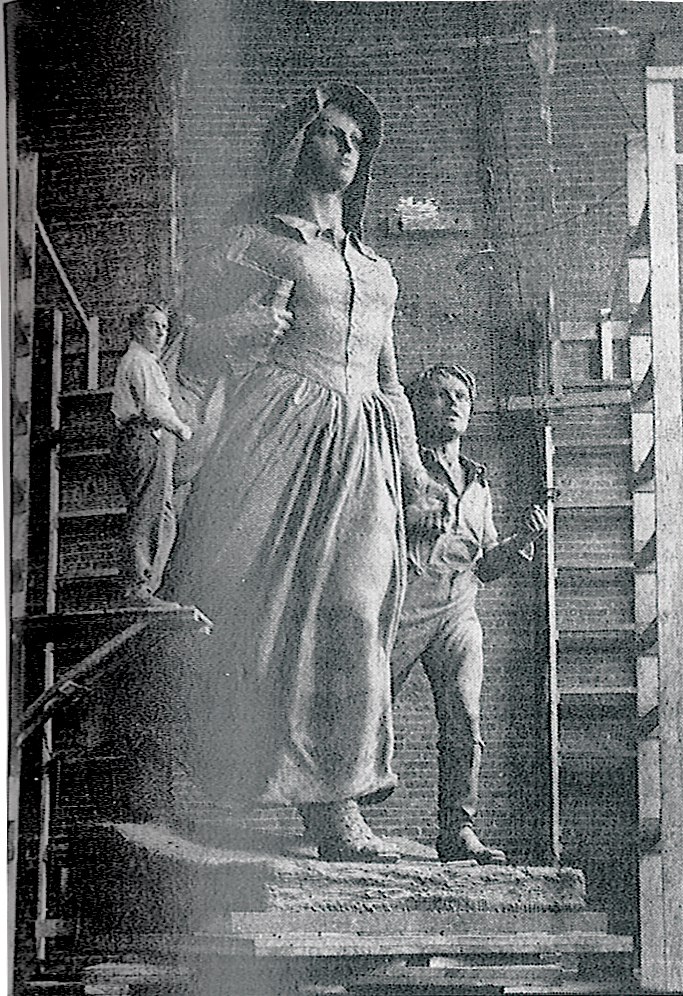Bryant Baker knew that the Pioneer Woman was his masterpiece, so he called in a photographer to document its gradual, tedious construction from a scale model into a towering 17-foot structure of wood and clay. From the clay model, the 12,000-pound bronze statue was caste.
In time the photographs were forgotten. Those who knew they had been taken perhaps thought they were lost; everyone else assumed that no one had taken the trouble to document
the process.
Millionaire oilman and former Oklahoma Governor E.W. Marland had commissioned the statue. He wanted it erected just down the road at the base of the hill on which his glorious Ponca City mansion rested. His idea was to have a magnificent monument dedicated to the courage and determination of the women who settled the West.
Marland organized an international competition to determine the most appropriate design. The 12 best works were then selected from all those submitted and were sent on a tour of galleries and exhibition halls throughout the world. They ranged in style from traditional to abstract. Those viewing these works of art were asked to vote for the best one in terms of design and representation of ideals of early pioneer spirit.
Of course, Baker, a New York sculptor, won the competition. His work was of a young woman with long dress and bonnet, striding confidently westward with son in hand. (The statue faces south-southwest in Ponca City.)
The Pioneer Woman took Bryant two years to complete and cost Marland $300,000. On 89er Day, April 22, 1930, the statue was dedicated with great fanfare. Will Rogers was a guest of honor, and it was at these dedication ceremonies that he first stated his famous line, “I never met a man I didn’t like.”
Although Baker had a long and productive career ahead of him and was to later sculpt famous statues of John F. Kennedy and others, he deemed the famous lady his best work. In the 1930s he even moved his studio to Ponca City for a time to be near it. That studio, which was in the garage of the baronial estate’s mansion, is now being restored.
When Baker died in 1974, two Ponca City businessmen traveled to New York, purchased the entire contents of Baker’s studio, and brought it back to Ponca City for display.
The fascinating glass negatives of the photographs of the Pioneer Woman in various stages of completion were discovered among Baker’s studio possessions. The negatives will soon be destroyed after a limited edition of 500 prints of each of the negatives is sold.
Bryant Baker and skilled craftsmen constructing Pioneer Woman in a New York studio; Baker used an instrument called a panagraph to properly scale the 17-foot statue with the smaller work. Images originally appeared in Oklahoma Monthly.
Editor’s note: This article appeared in This Land Vol. 5, Issue 12, June 15, 2014 and was originally published in Oklahoma Monthly. Read “The Stories Matter” by Tom Boettcher, former editor of the now-defunct publication, to learn more about that progressive magazine, which was committed to courageous journalism in the 1970s.

